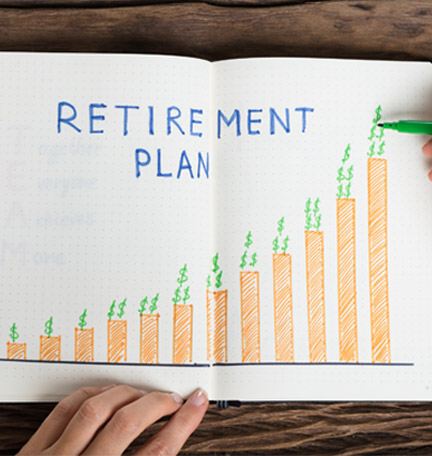Deciding when to emphasize income-generating investments in retirement accounts is a moving target.
Whether you are nearing retirement, have passed the cherished threshold or have been relishing a work-free life for a couple of years, your retirement portfolio is likely never far from the top of your mind. That's especially true when the stock market flashes its volatile side, as it has from time to time.
During those periods, many retirees tend to rethink their exposure to income-generating investments such as bonds, which generally offer steadier returns than growth investments such as stocks.
But general market conditions alone shouldn't drive the composition of your portfolio, says Mark Blackwell, Senior Vice President and Mississippi Area Wealth Executive for Regions Private Wealth Management in Ridgeland, Miss. Instead the move into income-generating investments should hinge on four additional key factors specific to your circumstances:
- The amount you have accumulated
- How much you annually contribute to your retirement accounts
- When you anticipate making withdrawals
- How much you anticipate withdrawing each year
"If you don't have much of a margin over the income you will need to fund 20-plus years of retirement, then you cannot take the risk of being in growth investments," he says. "A large equity position may be very appropriate for older clients if they have the resources to weather the short-term volatility of the markets."
Why Retirement Income Is Important
Historically, stocks generate better long-term results than bonds and other income-generating investments, but the potential for ultimately higher returns is tempered by greater short-term risks. Accordingly, for those at retirement age, the pain of a 10-percent downturn in the stock market can be much more acute than for those with longer timeframes.
"So it does make sense to move, over time, to income-producing, less-volatile investments," Blackwell says. "I do not, however, believe in radical changes to a portfolio at any time because the implications can be significant."
Ideally, you should evaluate your retirement portfolio annually — including once you retire — and within the context of your life stage and future expectations. As part of that review, gradual changes to your growth-income blend can be implemented over time.
These assessments should encompass all taxable and tax-deferred accounts. "When you pull all of your accounts into one pie chart, instead of one pie chart for your taxable accounts and another for your tax-deferred accounts, you get a much better sense of where a move into income investments is beneficial," Blackwell says.
For example, that could mean buying tax-free bonds in a taxable account to boost retirement income levels or holding a mutual fund that has achieved impressive capital gains within a tax-deferred account.
Don't Ignore Taxes or Required Minimum Distributions
Given the uniqueness of every situation, Blackwell shies away from blanket recommendations around what assets to convert to income and when. Ideally, based on his four key retirement factors, you can hit retirement with a solid balance achieved over time.
With that said, always keep tax implications and required minimum distributions from retirement accounts on your radar.
Historically, a portion of distributions from individual retirement accounts and 401(k) plans have been taxed at the individual's regular income tax rate, as have interest payments on a number of income investments held in taxable accounts. Meanwhile, the tax rate on long-term capital gains and dividends may be different and potentially lower.
As for required minimum distributions, you generally must take these on all employer-sponsored retirement plans, like 401(k)s and most IRAs after you turn 72. The exception is the Roth IRA, which may be left untouched until the owner dies.
Learn more about designing your retirement income plan.










